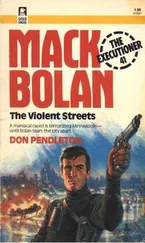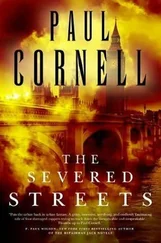Just before dawn on that same midnight shift, when the paperwork is complete and the office television offers nothing better than a test pattern, Donald Worden, strangely wired, wanders through the quiet looking for something else to occupy his time. James is asleep in the coffee room; Waltemeyer, pecking away at a 24-hour report in the admin office.
While making a fresh pot of coffee, the Big Man pries the plastic top from an unopened coffee can. Then, with the look of raw science filling his face, he sends the disk spinning through the stagnant air of the main office.
“Watch this,” he says, walking over to pick up his new toy. He sends it back across the room, this time with a perfect ricochet off the tile floor.
“For my next trick,” he says, preparing another launch, “we go off the ceiling.”
Worden sends the plastic soaring. From the admin office, Waltemeyer looks up from the typewriter, momentarily distracted by what appears in the corner of his eye as a sort of thin, airborne blur. He looks over at Worden curiously, then back down at his report, as if dismissing the illusion.
“C’mon, Donald,” yells Worden. “Get your ass out here…”
Waltemeyer looks up.
“C’mon, Donald. C’mon out and play.”
Waltemeyer continues typing.
“Hey, Mrs. Waltemayer, can Donald come out and play today?”
Worden sends the disk soaring toward the plate glass that separates the two offices just as the admin lieutenant, an hour early for the coming dayshift, walks through the fishbowl toward his office. The plastic glances off the outer glass and sails gracefully past a wall column and into the open door of Nolan’s office. The lieutenant stops in the doorway, marveling at the rare and extraordinary sight of Donald Worden, happy.
“Well?” asks the lieutenant, mystified.
“It’s in the wrists, lieutenant,” says Worden, smiling. “It’s all in the wrists.”
FRIDAY, DECEMBER 9
Rule Ten in the homicide handbook: There is too such a thing as a perfect murder. Always has been, and whoever tries to claim otherwise merely proves himself naive and romantic, a fool who is ignorant of rules one through nine.
A case in point: Here lies a black male by the name of Anthony Morris, twenty-one years of age, shot dead in the western half of Baltimore, Maryland. A young man of suddenly declining status in the local drug trade, Mr. Morris is found by Western uniforms in an empty courtyard of the Gilmor Homes, where a person or persons repeatedly compressed the trigger of a.38-caliber weapon and thus caused several small pieces of metal alloy to rip holes in Mr. Morris’s body.
When removed from the corpse tomorrow morning, every one of these metal pieces will be splintered and mutilated, rendering them useless for comparison purposes. And because the weapon is a revolver, there aren’t any spent casings lying around either. Even then, without a recovered weapon or a bullet or casing from a related crime-anything to which ballistic evidence might be compared-these problems are academic. Moreover, the crime scene is an asphalt courtyard in dead winter, barren of fingerprints, hairs, synthetic fibers, footprints, or anything else that could be mistaken as physical evidence. Nor is there anything in the pockets of the victim that constitutes a clue. Nor did Mr. Morris have anything illuminating to say to the first officers and paramedics-hardly surprising given that he was dead upon discovery.
Witnesses? On this midnight shift, in fact, there are no human beings whatsoever in this section of the Gilmor Homes projects. Emptied of its inhabitants for a pending renewal project, the courtyard into which Anthony Morris wandered is dark, cold and utterly devoid of human endeavor. No lights on the street, no lights in the boarded-up units, no pedestrians, no neighbors, no corner groceries or bars.
A helluva place to kill someone, thinks Rich Garvey, staring up and down the deserted courtyard. A perfect place, in fact. Anthony Morris is gunned down in a city of 730,000 and for all practical purposes, the crime scene could be the Nevada desert or the Arctic tundra or some other uncharted wilderness.
The original, anonymous call was for shots fired. Not even the report of a shooting or a body, not even a chance to talk to some people who found the victim. No passersby, no grieving relatives, no homeboys signifying from the corners. With McAllister working the crime scene, Garvey stands there shivering in the early hours of a winter morning, waiting, for any remote suggestion of life from the surrounding city-any warm, lighted place where a detective’s first question could be asked.
Nothing. The silence is complete; the scene, vacant. There is only Garvey and his partner and the usual Western District faces in a swirl of blue-top emergency lights, alone with a corpse in a sleeping city. Garvey tells himself that it doesn’t matter, that someone, somewhere, is ready and waiting to talk to him, to tell him about Anthony Morris and his enemies. Maybe the family, or a girlfriend, or some childhood buddy from the other end of the projects. Maybe an anonymous call to the homicide office, or a letter from some informant locked up on some pissant charge.
Because when you’re the man with the perfect year, no scene can be too bleak. After all, what would he have been left with on Winchester Street if Biemiller hadn’t grabbed the girlfriend at the scene? Or with the Fairfield bar robbery if the kid on the parking lot hadn’t remembered the tag on that getaway car? Or the Langley murder up in Pimlico, the one where the uniforms made a drug arrest a half-block away and the guy turned out to be an eyeball witness?
Yeah, Garney tells himself, I don’t have shit on this one. So what else is new? Except for the simplest kind of dunkers, they all look like weak sisters when you first get to the scene.
“Maybe you’ll get a call on this one,” says a Western uniform.
“Maybe,” says Garvey, agreeable.
True to that hope, he and McAllister are in a rowhouse living room an hour later, a room brimming with survivors. The victim’s mother, sisters, brothers and cousins are all arrayed at the edges of the room while the detectives stand in the center, exerting a certain centripetal force.
In the dry heat of the crowded room, Garvey watches McAllister launch into his standard exposition on what the grieving family should and shouldn’t do in this, Their Time of Loss. Garvey never stops marveling at Mac’s artistry with the families: Head tilted slightly, hands folded together at the waist, he’s a parish priest, expressing his most heartfelt sorrow in slow, measured tones. Mac’s even got a slight, endearing stutter that kicks in during moments of stress and adds a hint of vulnerability. At the scene an hour earlier, standing over the dead man, McAllister was as quick with a joke as any of them. Now, with the dead man’s mother, he’s Mr. Sharing and Caring. Phil fucking Donahue in a trenchcoat.
“Now there’s absolutely no need for you to go down to the medical examiner’s office. In fact, even if you wanted to go down there, they wouldn’t let you in…”
“Where’s that?” says the mother.
“At the medical examiner’s,” says McAllister slowly. “But you don’t need to worry about that. All you have to do is contact the funeral home of your choice and tell them that the body is at the medical examiner’s office at Penn and Lombard streets. They’ll know exactly what to do. Okay?”
The mother nods.
“Now, we’re going to try to find out who did this, but we’re going to need the family’s help… That’s what we’ve come here to ask for…”
The sales pitch. McAllister gives it his best shot, his you-can’t-bring-him-back-but-you-can-avenge-him soliloquy that leaves the mother nodding in agreement. Garvey looks around the room for some sign from the multitude, some small discomfort exhibited by a family member carrying a little bit of knowledge. The younger men and women seem distant, detached, but a few take the business cards, assuring the detectives that they know nothing but will call if there is so much as a rumor in the neighborhood.
Читать дальше












